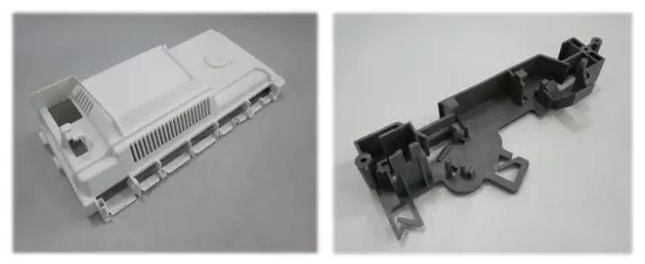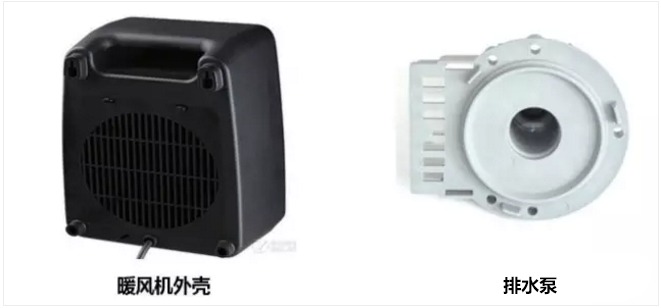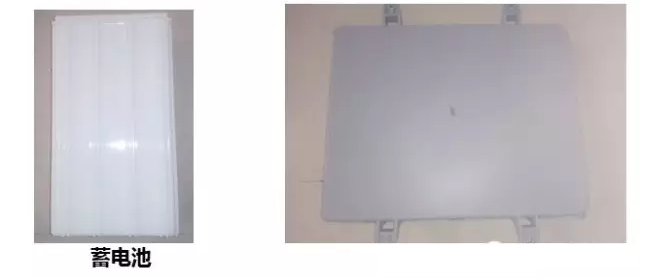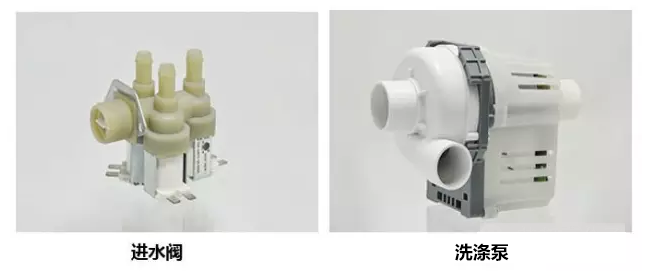

---The article comes from the Internet---
First, what is a halogen-free flame retardant material?——Resource conservation and environmental friendliness
1) Background
With the advancement of society and the accelerating process of industrialization, people are constantly proposing new and higher requirements for materials. Especially for polymer materials with petrochemical and coal chemical as the main sources, not only the materials themselves are required to meet their required performance standards,Moreover, the preparation and application of materials must also meet the characteristics of resource-saving and environment-friendly.In recent years, with the development of green chemistry and technology, halogen-free flame retardant technology has matured.
2) Halogen-free flame retardant materials
Flame retardant materials developed on the basis of green chemistry and technology are called halogen-free flame retardant materials.,Also known asClean flame retardant materialorEcological flame retardant material。In a narrow sense, a halogen-free flame retardant material refers to a material that is flame retardant using a halogen-free flame retardant. According to the deep understanding of foreign scholars, the halogen-free flame retardant technology is based on green chemistry and flame retardant technology, and runs through the entire ecological link of raw material selection, flame retardant materials and finished product design, manufacturing process and waste disposal, and to humans. Environmentally friendly, use recycled resources or materials that can be recycled as much as possible to produce flame retardant materials at the lowest resource and environmental cost while ensuring adequate fire safety.
Second, what is halogen-free?——Halogen-free industry definitions and standards
As everyone knows,The halogen-ruthenium flame retardant system has an efficient and stable flame retardant effect,But its many disadvantages make it undergo a revolution that has gradually been replaced in the world:
First, the halogen-containing plastic material generates a large amount of toxic gas on the one hand and a large amount of dense smoke on the other hand during the combustion process. According to authoritative statistics, more than 80% of deaths in fires are caused by heavy smoke and toxic gases from material combustion. Secondly, hydrogen halide gas is released during combustion. Hydrogen halide dissolves in water and combines with water vapor in air. Acid rain causes different degrees of damage to buildings, crops, human health, etc. Finally, it will release a small amount of hydrogen halide under processing and heating conditions, causing corrosion to machines or molds.
In the industry, the content of fluorine (F), iodine (I) and strontium (At) in halogens is generally not limited. The definition of halogen-free only specifies the two elements of chlorine (Cl) and bromine (Br) in materials or products. The respective values of the respective contents and total contents. The standards for halogen-free regulations are also consistent across the worlds standards organizations, as shown in the following table:
At the same time, this is also the halogen-free control standard for its electronic IT products by companies such as Apple, Samsung, Dell, Asus, and Sony.
Third, the mission of halogen-free flame retardant PP——The searcher of the electronics and home appliance industry
Polypropylene (PP) has the advantages of low density, good rigidity, high strength, chemical resistance, and excellent processing performance, and is widely used in electronics, home appliances, automobiles and other industries.
At the same time, due to the low price of PP, many product models and complete modification methods, it is most promising to realize the engineering of general plastics. The PP material with excellent flame retardant performance is an important part of its engineering field, and the halogen-free flame retardant PP came into being under such a background, and it has become a searcher of the electronic appliance and home appliance industry!
There is no doubt that Jushi Chemicals halogen-free flame retardant PP [Sermat TM 5000] has become the "smart" of its kind, and its series of products are not only versatile, complementary in performance, but also have the general characteristics of halogen-free flame retardant PP. outer:
Low smoke - low smoke generation during combustion and no toxic or corrosive gases.
Halogen-free - Cl, Br each content ≤ 500 ppm, total content ≤ 1000 ppm.
Environmental protection - through the US UL certification, and meet the requirements of RoHS, SVHC, PFOS & PFOA, 17P, PAHs and other regulations.
Low density - at least 20% lower than the same type of halogen flame retardant PP density, with a higher cost performance.
And can meet the needs of different customers for different products, truly tailor-made for customers, free DIY service purposes!
Table SEMTMTM 5000 Series Product Guide

Figure 5000Y Application example electrical control box, switchboard, electromagnetic inlet valve, coil bobbin, etc.

Figure 5000B application examples: microwave oven, wire harness junction box, electric heating table, etc.

000R application example heater, drain pump (for washing machine)

Figure EP50001 application example: battery casing, lightning arrester, etc.

Figure 5000G application example: inlet valve, washing pump, etc.
Fourth, the loss of halogen-free flame retardant PP——Resurrection
1. Halogen-free flame retardant PP flame retardant principle:
The flame retardant used in the halogen-free flame retardant PP is an intumescent halogen-free flame retardant, which mainly functions through a condensed phase. At lower temperatures, the flame retardant can produce an acid that acts as a dehydrating agent; at slightly higher temperatures, the acid promotes PP for dehydration, and the system melts during the process; water vapor from dehydration and heat from PP The non-combustible gas generated by the decomposition expands and foams the system in the molten state; at the same time, the ester group in the PP is dehydrated and carbonized to form inorganic substances and carbon residues, and the system is further foamed; when the reaction is near completion, the system gels. And curing, and finally forming a porous foamed carbon layer.
2. Halogen-free flame retardant PP application areas:
Halogen-free flame retardant PP improves the flame retardancy of the material and greatly increases GWIT and GWFI to make it widely used in the electronics industry. However, the flame retardant ammonium polyphosphate in the halogen-free flame retardant PP product has a certain moisture absorption property, and the ammonium polyphosphate itself has a certain degree of polymerization, and its relative PP molecular chain still belongs to the oligomer category.
On the one hand, it has no promoting effect on PP crystal nucleation (including heterogeneous nucleation), but is similar to the function of plasticizer;
On the other hand, the molecular weight distribution of PP is increased, so that the regularity of the PP molecular chain is lowered. This product is not recommended when our products are more stringent in terms of gloss, scratch resistance and voltage resistance.
★ Halogen-free flame retardant products are only suitable for parts with lower gloss requirements;
★ PP itself is not scratch-resistant, and the halogen-free flame retardant series products are relatively weak in scratch resistance compared with similar traditional bromine-tantalum flame retardant and talc powder, calcium carbonate and other filling systems;
★ Halogen-free flame retardant PP products are suitable for parts with lower requirements on breakdown voltage, generally not exceeding 50KV.
3. Halogen-free flame retardant PP common problems and precautions:
(1) The flame retardant of the parts after injection molding is reduced or not flame retardant
★The effect of calcium carbonate: Halogen-free flame retardant PP series products are sensitive to calcium carbonate, and can not be mixed with calcium carbonate during injection molding;
★ Effect of halogen: If the halogen-free flame retardant PP series products are mixed with halogenated flame retardant products, the flame retardant efficiency will be reduced, the appearance color will be darkened, and halogenated flame retardant products should not be mixed during injection molding;
★ Effect of carbon black: Halogen-free flame retardant PP series products are sensitive to carbon black. If you need to make gray-black parts, it is recommended to contact professional companies to make black materials or provide special black masterbatch by professional companies. , Ju Shi Chemical is very strong in this respect, may wish to contact.
★ The effect of release agent: Since most of the release agent is a small molecule of silicon series, it has a certain negative impact on the flame retardant efficiency of the halogen-free flame retardant PP series products, so the mold release agent should be appropriately reduced during injection molding. Or the amount of mold release agent is not used;
★ Impact of recycled materials: Since the recycled materials exceed a certain proportion, the flame retardant efficiency of the halogen-free flame retardant PP series products will be reduced, so the proportion of recycled materials should be appropriately controlled and reduced;
★ The influence of pressure or temperature of injection molding: If the pressure of injection molding is too high or the temperature is too high, the flame retardant in the halogen-free flame retardant PP series will be slightly decomposed, resulting in a decrease in flame retardant efficiency. The injection pressure or injection temperature should be appropriately reduced.
(2) Whitening phenomenon occurs in injection molded parts
★ The influence of the mold: The shrinkage rate of the halogen-free flame-retardant PP series products is relatively stable, and the selection of the mold must be consistent with the data of the specific grade shrinkage rate;
★ The effect of release agent: The release agent can be appropriately added without affecting the appearance and flame retardancy of the part;
★ The impact of the injection molding process: appropriately reduce the injection pressure and holding pressure, shorten the holding time and extend the cooling time.
V. Prospect of halogen-free flame retardant
In the future, human beings will pay more attention to the environmental problems of survival, and halogen-free flame retardant technology will play an important role in improving the living environment of human beings. The non-halogenation of flame retardant materials is increasingly recognized and concerned by everyone. People will revise the evaluation methods of flame retardant materials according to the requirements of green industry, that is, environmentally friendly products, and give uniformity to the whole world. Re-evaluation requires that the flame-retardant materials meet the requirements of environmental protection in all aspects of production, use and recycling, and waste disposal, and use flame-retardant materials in harmony to achieve mutual friendliness between the flame-retardant materials and humans and society.
The future halogen-free flame retardant technology will be an organic combination of existing flame retardant technology and nano-flame retardant technology, catalytic flame retardant technology, grafted carbon-fired flame retardant technology, etc., to achieve universal, environmentally friendly and high flame retardant materials. Performance, multi-functionality, replacing some existing special engineering plastics. It not only reduces the cost of flame retardant materials, but also reduces the types of plastic materials, which brings great convenience to the recycling of plastic materials and the concentration of waste materials. Finally, let us hope that the halogen-free flame retardant PP will continue to make great strides in the future material field and write a magnificent chapter!
Address: Building 2, No.66 Feidu Rd, Nanhui New Town, Pudong New District, Shanghai, China
Phone: 021-68256865
Fax: 021-68256255

© 2009-2022 ZhongLei New Material Science Co.,Ltd Copyright Shanghai ICP 18046883Number-1